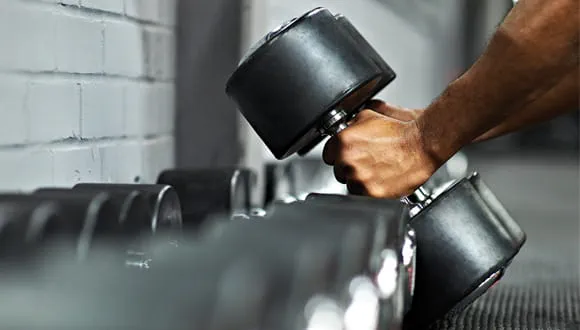
Understanding Muscle Growth and Pain
feeling pain while lifting is a signal from your body that you are building muscle. The process of muscle growth, known as hypertrophy, involves a complex series of physiological changes triggered during weightlifting. When engaging in resistance training, muscle fibers undergo stress, leading to microscopic tears. This damage signals to the body that it needs to repair the affected fibers, resulting in an increase in muscle size and strength over time. Thus, feeling pain while lifting is a signal from your body that you are building muscle, as it signifies that your muscles are working hard to adapt and improve.
Distinguishing between muscle soreness and injury is crucial for maintaining a healthy workout regimen. Muscle soreness typically arises from the stress of intense exercise, particularly during activities that the body is not accustomed to, leading to a common condition known as delayed onset muscle soreness (DOMS). This type of pain usually sets in 24 to 48 hours after the workout and serves as an indication that your muscles are adapting to the stress placed upon them. Unlike injury-related pain, which can be sharp and persistent, soreness is generally a dull ache that diminishes with time and can be eased through proper recovery methods like rest, hydration, and nutrition.
Furthermore, it is essential to recognize that not all pain during workouts is detrimental. The signals of discomfort that accompany lifting weights indicate muscle fibers being stressed and engaged in repair mechanisms. This engagement is a vital component of the muscle building process, as the repairs lead to stronger and more resilient muscle tissue. Understanding the science behind these processes helps in fine-tuning your training approach, ensuring that you harness the positive aspects of pain while lifting. In this context, experiencing soreness should be viewed as a badge of honor in your fitness journey, marking progress towards your fitness goals.
The Role of Pain in Strength Training
Pain often serves as an essential marker during strength training, indicating that the body is undergoing significant physiological changes. When individuals engage in resistance training, they may frequently experience discomfort or pain as a result of the mechanical stress placed on muscles. This sensation, often perceived as a negative experience, can actually be a signal from your body that you are building muscle. Competent trainers and trainees alike recognize that some level of discomfort is a normal and necessary part of the muscle-building process.
One key concept in strength training is progressive overload, which entails gradually increasing the weight or resistance you use during exercises. This practice is fundamental to muscle growth, as it challenges the body to adapt to new demands. As you push your limits, the intensity of your workouts increases, leading to feelings of pain while lifting. This pain serves as a signal that your muscles are responding to the increased load and attempting to adapt by growing stronger and larger. Thus, encountering discomfort during training sessions can often be viewed as an indicator of progress.
Moreover, embracing the psychological aspects of pain is crucial in fostering resilience and a positive mindset towards training. Acknowledging that discomfort is a natural component of growth helps in reframing one’s attitude. Rather than associating pain with harm, recognizing it as a part of pushing one’s boundaries can transform the training experience. Participants should aim to cultivate mental fortitude, understanding that embracing some discomfort is integral to achieving their strength training goals. Feeling pain while lifting can thus be interpreted as an essential communication from your body, guiding you on the journey of muscle development.

When to Listen and When to Stop: Pain vs. Injury
Understanding the distinction between productive pain and potential injury is crucial for anyone engaged in resistance training. When lifting weights, experiencing a certain level of discomfort is often associated with muscle building. This feeling pain while lifting is a signal from your body that you are building muscle; however, not all pain is constructive. Recognizing when to push through discomfort and when to stop is essential for preventing long-term harm.
Productive pain can be characterized by a burning or sore sensation in the muscles being targeted, usually felt during or after a workout. This type of discomfort typically indicates that your muscles are being worked intensely and are on the path to growth. Conversely, pain that feels sharp or acute, or that persists beyond the normal post-workout recovery, could signal an injury. Warning signs such as swelling, bruising, or a decrease in performance indicate that your body may be signaling an issue that requires immediate attention.
To effectively manage these sensations, it is important to adopt a mindful approach to workouts. Begin by performing a proper warm-up and incorporating adequate rest days into your routine. If feeling pain while lifting becomes overwhelming or is associated with any of the injury warning signs noted earlier, consider reducing the weight, modifying the exercise, or taking a break entirely. This allows your body to recover and heal, ensuring that you can continue to build muscle responsibly.
Lastly, listen to your body. Recognizing the difference between feeling pain while lifting as a sign of muscle growth and experiencing injury is vital for achieving fitness goals without risking harm. Taking proactive measures when discomfort arises helps to foster a balanced approach to strength training.
Creating a Balanced Training Plan Incorporating Pain Awareness
Integrating pain awareness into your training regime is essential for achieving sustainable muscle growth while minimizing the risk of injuries. It is imperative to understand that feeling pain while lifting is a signal from your body that you are building muscle. With this in mind, a balanced training plan should be structured around realistic goals and progressive challenges that allow for both discomfort and safe recovery.
Setting achievable objectives is a crucial first step. These goals can be tailored to either increase the weight lifted, the number of repetitions, or the duration of exercises. Recognizing that pain is often a part of the muscle-building process helps in formulating a plan where discomfort is viewed as the body adapting to stress. Nevertheless, these goals must be combined with self-awareness to prevent overtraining. Regular assessment of how your body feels during and after workouts can guide necessary adjustments to the training plan.
feeling pain while lifting is a signal from your body that you are building muscle. Tracking your pain levels and recovery times can provide valuable insights into your body’s response to the training load. Consider maintaining a workout journal, noting the types of pain experienced, along with any subsequent recovery measures. This practice encourages the development of an adaptive mindset, enabling you to respond in real time to the body’s signals. Furthermore, it promotes an understanding of the difference between normal muscle soreness and pain that could indicate injury.
In addition to pain awareness, rest days play an integral role in muscle recovery and growth. Nutrition and hydration should also be prioritized, as they directly impact your ability to recover and sustain performance. A well-rounded diet rich in protein, carbohydrates, healthy fats, and micronutrients supports muscle repair, while adequate hydration ensures optimal physical functioning. Remember, feeling pain while lifting can be an indication of progress, and by harmonizing this understanding with an informed training approach, you can achieve your fitness aspirations effectively.



